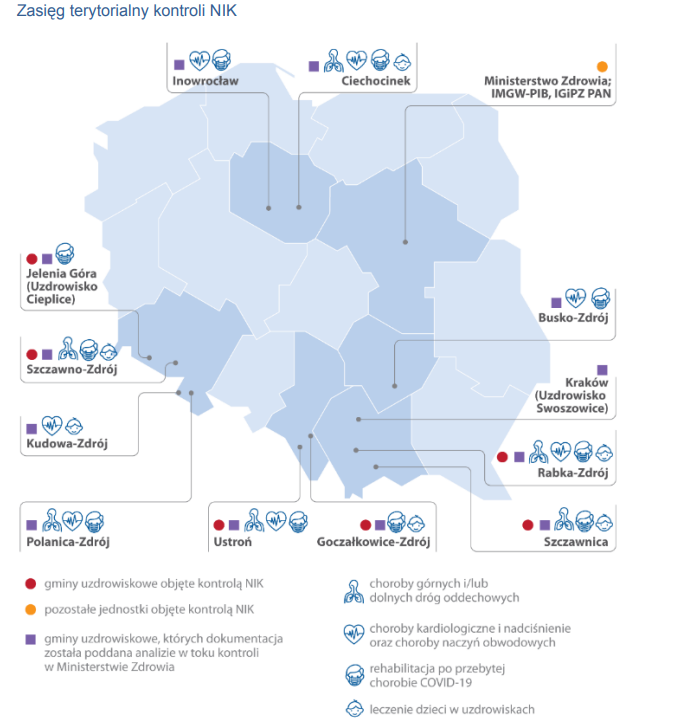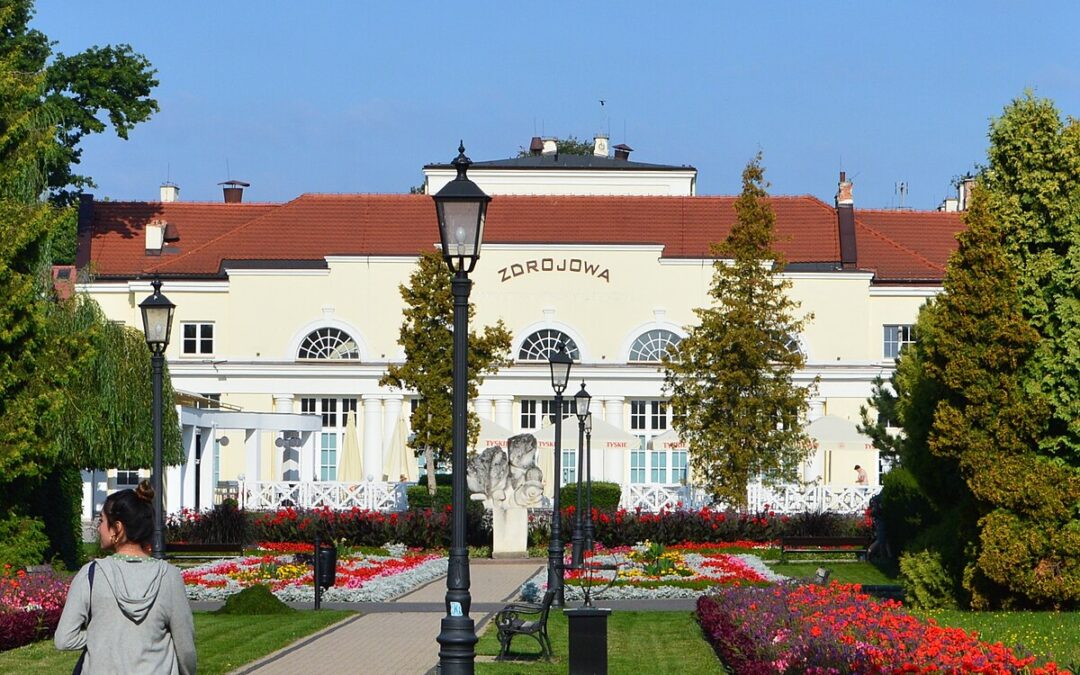The Polish health ministry maintained the status of 12 health resorts despite none of them meeting air quality standards, an audit carried out by the Supreme Audit Office (NIK), the state body responsible for monitoring government spending, has found.
The average annual concentration of carcinogenic benzo(a)pyrene (BaP) exceeded the acceptable level by between 240% and 1,450% across all 12 resorts.
“The problem of polluted air was underestimated, which could have a negative impact on the health of visitors, especially those at higher risk of illness, such as people with respiratory or cardiovascular diseases, as well as seniors and children,” Marian Banaś, the head of NIK, said in an official statement.
NIK oceniła, że działania skontrolowanych podmiotów nie zapewniły optymalnych warunków do prowadzenia lecznictwa uzdrowiskowego. Na etapie potwierdzania statusu uzdrowisk, zbagatelizowano problem niedostatecznej jakości powietrza. Więcej -> https://t.co/ynO3MW26QU
— Najwyższa Izba Kontroli (NIK) (@NIKgovPL) August 19, 2024
NIK audited the health ministry, as well as the Institute of Meteorology and Water Management (IMGW-PIB) and the Institute of Geography and Spatial Organization (IGiPZ PAN), which issue certificates confirming the therapeutic properties of the resorts.
In addition, it audited six health resort municipalities with 12 health resort towns in total.
According to Polish legislation, the status of a health resort can be granted to an area that meets a total of five conditions, two of which are a climate with therapeutic properties and appropriate environmental requirements.
The audit covered the period of 2015-2017 regarding the assessment of the climate’s therapeutic properties and the period 2017-2019 regarding the issued certificates.
The results revealed that the health resorts’ compliance with air quality requirements was inadequately assessed by the institutes that issue certificates, resulting in the towns having their health resort status maintained despite poor air quality.

The scope of the audit, Source: NIK
During the 2015-2017 period, daily concentrations of PM10 – harmful airborne particulate matter – were exceeded in 11 of the 12 health resorts analysed.
In three of them (Goczałkowice-Zdrój, Swoszowice, Rabka-Zdrój) they exceeded the acceptable level by between 189% and 334%, while in another five (Busko-Zdrój, Ciechocinek, Cieplice, Inowrocław, Szczawno-Zdrój) this figure ranged from 109% to 166%.
In turn, average annual concentrations of B(a)P exceeded the acceptable level by between 240% and 1,450% across all 12 resorts. Eight towns recorded concentrations that exceeded the level by at least 700%.
Air quality was worse in winter months, partly due to the use of high-emission coal stoves for heating. Despite this, health resorts were still receiving patients.
According to data presented by NIK, a total of almost 45,000 people with respiratory and cardiovascular diseases, children, and people undergoing rehabilitation after COVID-19 were treated during the cold seasons of 2018-2022.
Sorry to interrupt your reading. The article continues below.

Notes from Poland is run by a small editorial team and published by an independent, non-profit foundation that is funded through donations from our readers. We cannot do what we do without your support.
Meanwhile, IMGW-PIB indicated that for the vast majority of each year the local climate conditions did not have a debilitating effect on those staying at the resorts, despite the fact that the documentation issued by the institute provided data on poor air quality standards.
According to NIK, in its assessments IGiPZ PAN pointed to the harmful effects of PM-10 and B(a)P and mentioned contraindications in treating patients with respiratory and cardiovascular conditions.
“In reality, [this] did not provide a basis for directing people particularly vulnerable to the effects of poor air quality away from these health resorts, and the health minister did not take any action to change this state of affairs,” NIK concluded.
The auditor also pointed to the fact that between 2018 and 2022, in the six health resorts municipalities analysed, insufficient corrective measures were taken to reduce dangerous emissions.
In its conclusions, NIK recommended that the health minister and minister of climate and environment cooperate and further investigate the matter.
Kraków in Poland had the second-worst air pollution in the world at one point yesterday, behind only Delhi in India.
Local authorities issued warnings advising residents to limit outdoor physical activity and the amount of air they let into their homes https://t.co/AOD0tPoWrL
— Notes from Poland 🇵🇱 (@notesfrompoland) December 7, 2023
Despite Poland’s annual smog ranking showing improvements in air quality in 2023, the country remains among the most polluted in Europe.
In December 2023, the city of Kraków in southern Poland recorded the second-highest levels of air pollution in the world after Delhi, India.
Poland’s air pollution is particularly bad in the south, where almost 60% of the country’s health resorts are located.
An annual “smog ranking” has found that Poland’s air – which is among the most polluted in Europe – has improved.
The average concentration of harmful PM10 particles was within maximum safe limits in all monitored places for the first time since 2015 https://t.co/sm1eD4dbJW
— Notes from Poland 🇵🇱 (@notesfrompoland) November 3, 2023
Main imaged credit: Wikimedia Commons (CC-BY-SA-4.0)

Agata Pyka is a former assistant editor at Notes from Poland. She specialises in Central and Eastern European affairs, cybersecurity, and investigative reporting. She holds a master’s degree in political communication from the University of Amsterdam, and her work has appeared in Euractiv, the Balkan Investigative Reporting Network (BIRN), and The European Correspondent, among others.



















